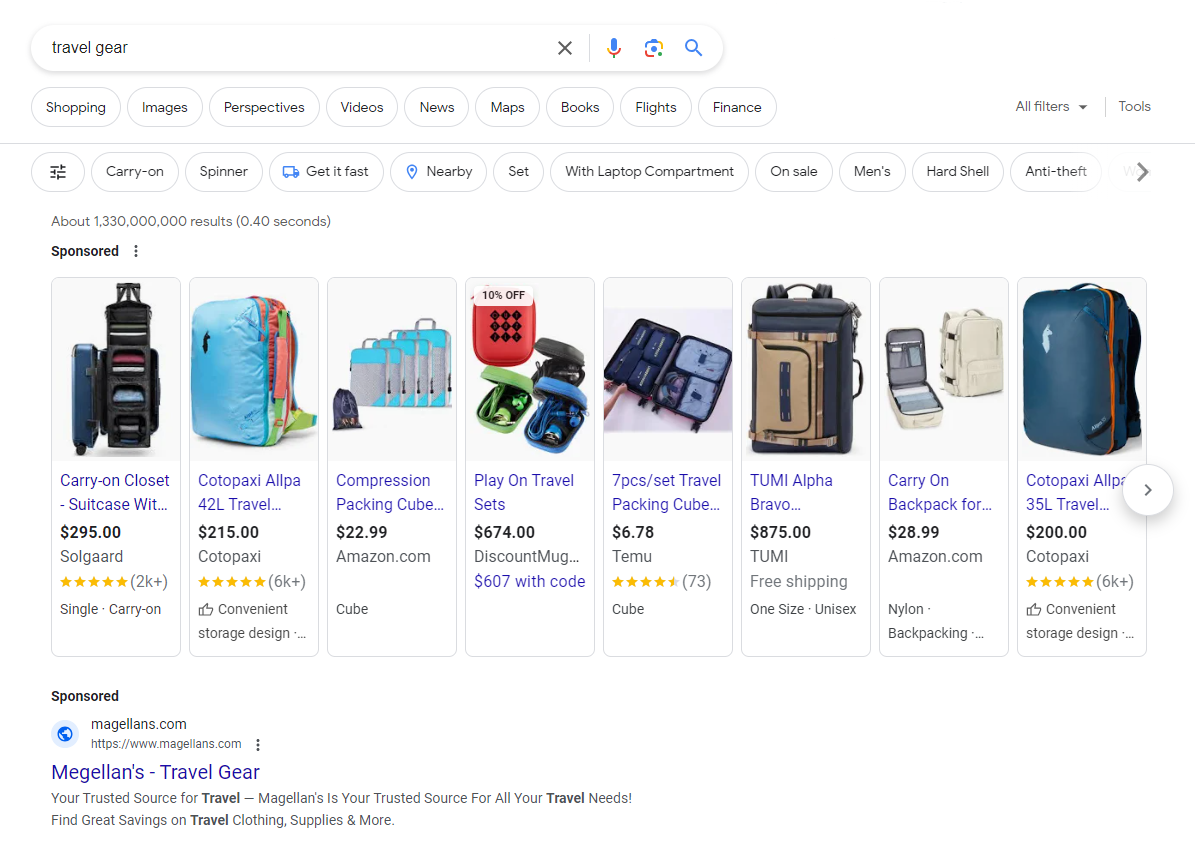Now more than ever, businesses are turning to digital advertising as an effective way to reach their target markets. The latest projections published by the Statista Research Department indicate that digital advertising spend worldwide will amount to 836 billion dollars by 2026.
The digital advertising space continues to grow as more businesses realize the value it brings to their bottom line. Through the power of digital advertising, JH has helped our clients raise much-needed funding, acquire new hires to help scale their business and solve client pain points in creative ways.
In this article, I want to tackle one of the most common ways for a business to promote themselves online; a Search Engine Marketing (SEM) campaign on Google Ads. An SEM campaign is a great way to promote your business online and obtain real estate on the most popular search engine around – Google.

While an SEM campaign can be an invaluable method of advertising for your organization, it’s only effective if it is set up correctly. Creating an SEM campaign that lacks key components can result in high costs and wasted spending.
And that’s why I’m here! In the following sections, I’m going to highlight 5 questions that you should be asking when creating or investing in an SEM campaign so you can be sure that your SEM campaign is set up for success and provides a positive impact on your business.
1. What is the Goal of our Google Ads Campaign?
Before jumping into your SEM campaign, you should first define what your campaign is going to accomplish. Just saying “Advertising my business on Google” is too vague and leaves a lot of ambiguity when defining your campaign success at the end of the month.
A great way to start to define your campaign goal is asking yourself “What actions can a user take on my website that provide value for my business?”
This could be requesting a quote, filling out a form/application, or picking up the phone and calling your business. Defining these valuable actions gives shape to your campaign and which interactions you want to promote on your website.
Once you've defined which actions are valuable for your business, track them as Conversions. This will give you clear reporting transparency and allow you to further optimize your SEM campaign through conversion-based bidding.
2. What is my Expected ROI?
The biggest question most businesses have when starting an SEM campaign is what their expected Return on Investment is going to be.
If we invest $X per month into this campaign, how many leads will we get? How many of those leads can we turn into closed deals? Will Google just take my money and run?

While there is no magic formula that will give you a guaranteed ROI from your investment into an SEM campaign, Google along with other 3rd party SEM tools has a multitude of statistical insights and reports that can give a more accurate depiction of what your business can expect to receive from a well-designed SEM campaign.
Here at JH, we use a combination of these tools and reports to create our own internal ROI Calculator that gives us and our clients confidence that our proposed SEM campaign would provide a positive ROI and make a tangible impact on their bottom line.
If you are pushing for investment in an SEM campaign in your organization, set up a ‘Trial Run’ to prove its value. Allocate a percentage of funds you'd spend on traditional marketing efforts into an SEM campaign to see what sort of results you get.
One HUGE benefit SEM campaigns have over traditional forms of marketing (Billboards, radio, TV etc.) is that you can track the actual numbers of how many people saw your ad, clicked on it, and made a valuable conversion as a direct result of your SEM campaign. This gives you an apples-to-apples comparison of the ROI of your SEM campaign so you can say with confidence “We invested $X amount of dollars into our SEM campaign and received X amount of calls/leads/new business as a result".
3. What Landing Pages will we Use for Our Ads?
Two stores are advertising the same pair of shoes that you've been looking to purchase for the same price.
Store A’s ad takes you directly to the shoes’ product listing page where you:
- Select your size
- Select your style
- Make your purchase
Store B’s ad takes you to the home page where you:
- Browse through category pages
- Select the correct shoe category
- Scroll through a list of products
- Find the shoes you originally clicked on
- Select your size
- Select your style
- Make your purchase
Which ad will result in more purchases?
In this instance, the obvious winner would be Store A since their ad led users to a page where they could make the valuable conversion (buy those amazing shoes) in the least amount of steps.
People crave convenience! The more steps you put between your website visitors and a valuable conversion, the less likely they are to convert. That is why your ads must send users to pages where they can take meaningful actions in as few steps as possible.
4. How Competitive is our Industry in the Digital Advertising Space?
Just like you would run into competitors in the real world, you could see those same competitors in the SEM space. Fighting against multiple competitors to get in front of your target audience can drive up your campaign costs and put a strain on your SEM efforts. Popular SEM analysis tools can help you estimate the level of spend needed to be successful, which competitors are participating in SEM and how much they are investing per month in their SEM campaign.
Knowing which competitors are participating in SEM and their level of investment can give you and your company better insight into what to expect if you were to invest in an SEM campaign. It can also help determine whether investing in a SEM campaign would be beneficial for your business.
Do you enter the ‘SEM Arena’ and fight your competitors over ad space? Or do you walk away knowing that your competitors have hold of a bountiful source of leads, purchases, and revenue? It can be a tough call to make but doing some research beforehand will make the decision that much easier.

5. What is the Ideal Demographic and Geographic Targeting for our Campaign?
When setting up your SEM campaign, it is important to keep in mind which geographic areas you can effectively serve and the type of customers who are more likely to buy your product. If you are a local boutique clothing store that designs fashionable clothes for women, you can have your campaign target women above the age of 25 within a 15-mile radius of your store. You can even have your campaign allocate less funds to those outside of your target market to increase your spending efficiency and better focus on users who are more likely to make a purchase.
Having the ideal demographic and geographic targeting in place can increase spending efficiency by focusing on those users who will provide the most value for your business.
Leveraging these questions when creating or investing in an SEM campaign can give you the guidance and clarity you need to initiate an effective digital marketing campaign that provides a positive impact on your bottom line!
Article originally published March 17, 2021. Updated May 1, 2024.




